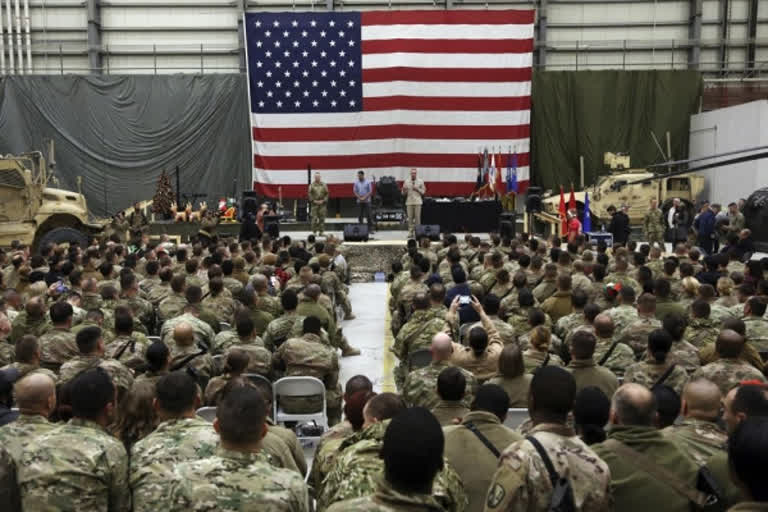Washington:As the last US combat troops prepare to leave Afghanistan, the question arises: When is the war really over ? For Afghans the answer is clear but grim: no time soon. An emboldened Taliban insurgency is making battlefield gains, and prospective peace talks are stalled. Some fear that once foreign forces are gone, Afghanistan will dive deeper into civil war. Though degraded, an Afghan affiliate of the Islamic State extremist network also lurks.
For the United States and its coalition partners, the endgame is murky. Although all combat troops and 20 years of accumulated war materiel will soon be gone, the head of U.S Central Command, Gen. Frank McKenzie, will have authority until September to defend Afghan forces against the Taliban. He can do so by ordering strikes with U.S. warplanes based outside of Afghanistan, according to defense officials who discussed details of military planning Thursday on condition of anonymity.
A look at the end of the war:
WHAT'S LEFT OF THE COMBAT MISSION?
Technically, US forces haven't been engaged in ground combat in Afghanistan since 2014. But counterterrorism troops have been pursuing and hitting extremists since then, including with Afghanistan-based aircraft. Those strike aircraft are now gone and those strikes, along with any logistical support for Afghan forces, will be done from outside the country.
Inside Afghanistan, US troops will no longer be there to train or advise Afghan forces. An unusually large US security contingent of 650 troops, based at the US Embassy compound, will protect American diplomats and potentially help secure the Kabul international airport. Turkey is expected to continue its current mission of providing airport security, but McKenzie will have authority to keep as many as 300 more troops to assist that mission until September.
Read:US withdrawal from Afghanistan can have consequences for both sides: Ghani to Biden
It's also possible that the US military may be asked to assist any large-scale evacuation of Afghans seeking Special Immigrant Visas, although the State Department-led effort may not require a military airlift. The White House is concerned that Afghans who helped the US war effort, and are thereby vulnerable to Taliban retribution, not be left behind.
When he decided in April to bring the US war to a close, President Joe Biden gave the Pentagon until Sept. 11 to complete the withdrawal. The Army general in charge in Kabul, Scott Miller, has essentially finished it already, with nearly all military equipment gone and few troops left.
Miller himself is expected to depart in coming days. But does that constitute the end of the U.S. war? With as many as 950 US troops in the country until September and the potential for continued airstrikes, the answer is probably not.
HOW WARS END
Unlike Afghanistan, some wars end with a flourish. World War I was over with the armistice signed with Germany on Nov 11, 1918 a day now celebrated as a federal holiday in the U.S. and the later signing of the Treaty of Versailles.
World War II saw dual celebrations in 1945 with Germany's surrender marking Victory in Europe (V-E Day) and Japan's surrender a few months later as Victory Over Japan (V-J Day) following the US atomic bombing of Hiroshima and Nagasaki. In Korea, an armistice signed in July 1953 ended the fighting, although technically the war was only suspended because no peace treaty was ever signed.
Other endings have been less clear-cut. The US pulled troops out of Vietnam in 1973, in what many consider a failed war that ended with the fall of Saigon two years later. And when convoys of U.S. troops drove out of Iraq in 2011, a ceremony marked their final departure. But just three years later, American troops were back to rebuild Iraqi forces that collapsed under attacks by Islamic State militants.
